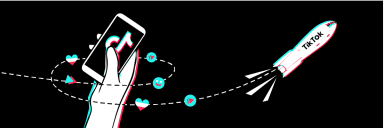Smartphones are beginning to transform how we engage in our everyday lives. Only a few years ago, they were still the minority of mobile phones around the globe, but already they’re beginning to transform how we engage in our everyday lives. Today, they have a much more dominant presence. Not only is smartphone penetration growing, with over two-thirds (67%) of mobile subscribers in the U.S. owning smartphones in Q4 2013, but consumer usage of phones is rapidly shifting toward increased screen time with entertainment and social media.
In anticipation of Mobile World Congress in Barcelona, we took a birds-eye-view snapshot of the mobile landscape using Nielsen’s proprietary opt-in panel of on-device meters, which measure consumer behavior using smartphones, from markets including the U.S., U.K., Italy, Japan, and around the globe.
But it’s not just smartphone penetration that’s growing. Consumers are also spending more time using them, as time spent using smartphones now exceeds Web usage on computers in the U.S., U.K. and Italy. Americans spent 34 hours using smartphone apps and on the mobile Web in December 2013, up six hours from December 2012. Britons spent a whopping 41 hours using their smartphones during December 2013. And Italians used their smartphones about twice as long (37 hours) as they spent on the Web via their PCs (18 hours) in December.
Average Time Spent Per Person by Platform in December 2013
| U.S. | U.K. | Italy | |
|---|---|---|---|
| Monthly TV time spent | 185 hours | 129 hours, 54 minutes | 143 hours, 20 minutes |
| Monthly online time spent | 26 hours, 58 minutes | 29 hours, 14 minutes | 18 hours, 7 minutes |
| Monthly mobile time spent | 34 hours, 21 minutes | 41 hours, 42 minutes | 37 hours, 12 minutes |
| Source: Nielsen |
Not only are consumers spending more time using their phones, they can’t seem to put them down, increasingly accessing their phones multiple times a day. U.K. smartphone users reached for their handsets an average of nine times a day during December, nearly twice as often as they did at the start of 2013 (5.5 times per day). Across the pond in the U.S., frequency of smartphone owners accessing apps and mobile sites increased from less than five sessions per day in December 2012 to an average of at least seven daily sessions using their smartphones at the end of 2013. So what activities are keeping consumers’ fingers glued to their smartphone screens? Apps make up the lion’s share of time spent using smartphones, led by the growth in time spent using apps for entertainment and media. In fact, the majority of Americans’ time with apps is spent playing games (18%), accessing entertainment (15%), or using social media (29%). In Japan, nearly half of time spent on smartphones is split between those same activities, and this global trend extends to the U.K. where more than one in four minutes spent (28%) using smartphones is using social networking apps.
Share of Time Spent using Smartphone Apps by Category
| U.S. | U.K. | Japan | |
|---|---|---|---|
| Communications | 12% | 9% | 16% |
| Shopping/Commerce | 2% | 5% | 6% |
| News/Info | 2% | 5% | 5% |
| Productivity/Function | 11% | 7% | 6% |
| Entertainment | 6% | 15% | 9% |
| Games | 9% | 18% | 16% |
| Social | 28% | 29% | 24% |
| Others | 29% | 12% | 17% |
| Source: Nielsen |
To be sure, traditional phone functions are still important, with smartphone time split between text messages (9% of total smartphone time), the phone dialer (3%), and address books (2%) among U.S. Android users. In Italy and Japan usage of traditional phone functions make up even smaller shares of Android user’s time, as users in Japan spend more time using instant messenger apps (7% total smartphone time) than text messaging (
Regardless of which market consumers use their mobile devices, more smartphones are entering the hands of consumers every day, and the growth in smartphone usage is driven by consumer’s constant connection to entertainment and media apps.
Look for Nielsen at Mobile World Congress 2014 where our mobile experts will present insights on global consumers’ interaction with mobile retail and mobile video.


